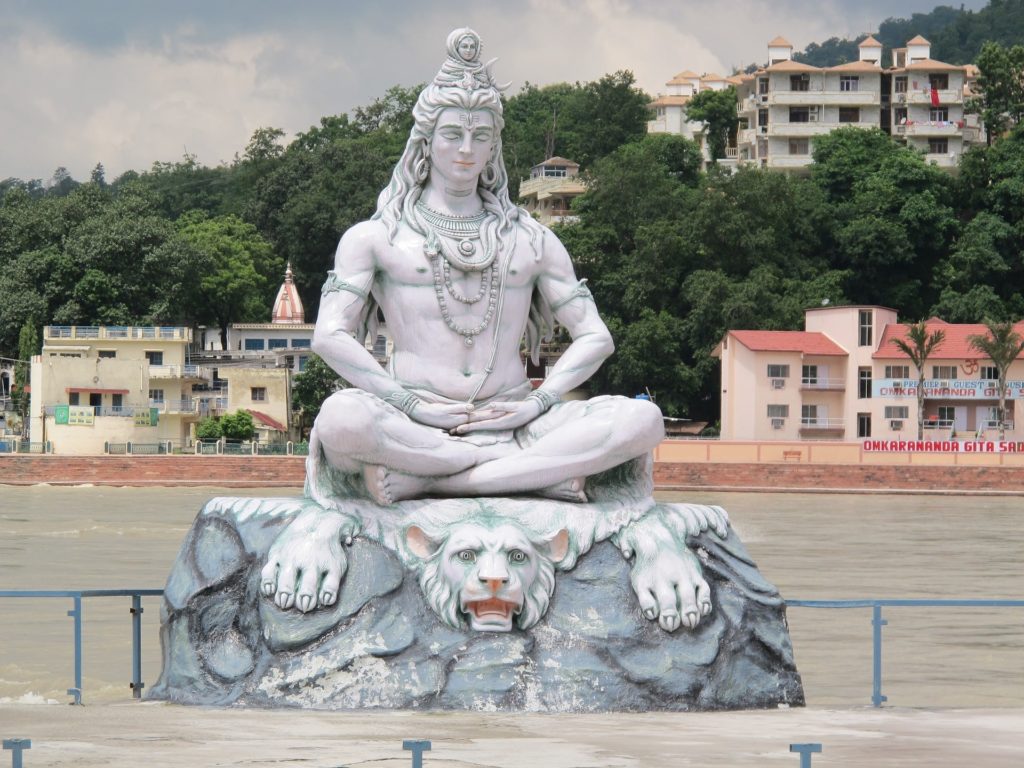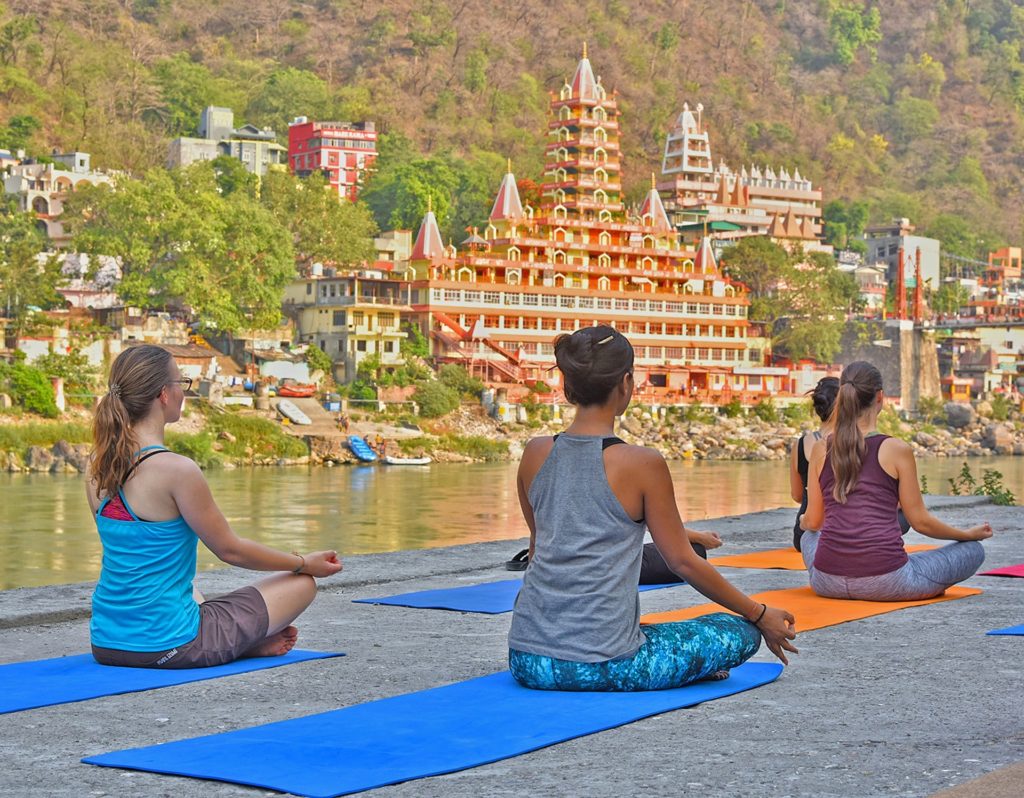‘Rishikesh’ is another name for the Hindu deity Lord Vishnu, better known as the preserver and protector of the Universe. The name, ‘Rishikesh’ is enough to invoke visuals of the breathtaking Himalayas and the thrills of water-kayaking, but this small town, imbued in spirituality has more to offer than that. Canta Dadlaney gives us a sneak-peak into the ancient spiritual city.
Stories about ancient India describe Rishikesh as the abode of the Gods. Surrounded by the towering Himalayas – the pride of India – this beautiful town has a rich history that dates back to the Ramayana (one of the holy scriptures of the Hindu religion).
Situated in the State of Uttarakhand, it is about 245 km from the capital city of Delhi and 43 km from Dehradun. The town lies at an altitude of 365 m above sea level and has temperatures varying from 8 to 35 degrees C.
If you love getting drenched in the rains, you should visit Rishikesh between the months of June and September. If you enjoy the cool, chill of a breeze against your face, the ideal months are between October and February. During the months of March until May, you can just soak in the sun!
Foreigners planning a trip to Rishikesh must deboard at Delhi. From Delhi, you can either take an air-conditioned train (6-hour journey) to Haridwar, and 30-minute drive from there by a three-wheeler to Rishikesh. Air-conditioned buses from Delhi also ply on regular intervals.
Stories about ancient India describe Rishikesh as the abode of the Gods. Surrounded by the towering Himalayas – the pride of India – this beautiful town has a rich history that dates back to the Ramayana.
The landscape is dotted with beautiful temples, ashrams (extremely economic accommodation), sacred sites and, hold your breath—even pubs. Yes, you have them all. The town is a photographer’s delight and the sounds of the temple bells ring clearly through the crisp morning air to make you jump out of your bed and start exploring.

Accommodation is available in plenty and of varying kinds. A lot depends on what you really are looking for. Fact of the matter – you are in Rishikesh, you have to be outdoors— exploring and enjoying Nature at its best, so keep accommodation at the bottom of your list. However, you can choose from luxury resorts to simple, hygienic and very comfortable lodging. The choice is yours. You can also live in an ashram (there are a large number of ashrams) but one has to connect with them via email to inquire about available accommodation and not just land up there expecting a red-carpet treatment. Ashrams offer accommodation at an extremely nominal cost and the food is yum too!
Upon arrival, you must visit the Swami Rama Ashram, established by Swami Rama, a holy sage, decades ago. This is not an ashram in the conventional sense but an academic institution where you will find students from around the world studying the holy scriptures of India, Yoga and more. The institute is managed by Swami Ved Bharati (disciple of Swami Rama) and offers excellent facilities to the students who make it their home during the course of their studies. The premises are vast and you wake up to the chirping of a variety of birds every morning. Well-kept gardens and a variety of flowers ranging from roses to large-sized dahlias are a treat for sore eyes.
You are free to follow the ashram’s regiment, which includes an early morning meditation or a brisk walk. A rich breakfast at 6.30 am with tea can keep hunger pangs away for the rest of the day. All on the house and courtesy demands that one does make a donation upon leaving the place.
Apart from this, another place worth visiting is the Swami Sivananda ashram (The Divine Life Society) which was established by Swami Sivananda, a self-realised soul who worked for the upliftment of the underprivileged and lepers.
Once your accommodation is finalised, you need to plan out a good itinerary to take home some memorable experiences. The first on your bucket list should be the Ram Jhula & Lakshman Jhula (bridge). These two sturdy bridges are landmarks in Rishikesh. The bridges are named with reverence to the heroes of the Ramayana – Lord Rama and his brother Lakshman. Walking across these bridges to the other side makes a very interesting experience as you hear the waters of the Ganges gushing away underneath and the freshness of the air simply overtakes your entire being.
The town is a photographer’s delight and the sounds of the temple bells ring clearly through the crisp morning air to make you jump out of your bed and start exploring.
If travelling solo, your best companions are the monkeys, amusing irritants for sure, as are the local photographers who will try to swindle you of some money for a few promising photographs of yours against the spellbinding backdrop. Pro tip: Avoid these guys because they promise to mail you the photographs but it never happens. Carry your own cameras and click to glory!
Local shops selling merchandise like woolen shawls, caps, coats and religious trinkets (Rudraksh beads) will tempt you to empty your pockets.
For the adventurer at heart, there are many interesting attractions – bungee jumping, hill climbing, water rafting, paddle boating, mountaineering, ropeway rides, para sailing, para gliding, and even hot-air ballooning! All sporting activities will have to be booked online.
Wake up early in the mornings and experience the sunlight filtering through the thin mist; see the peaks of the Himalayas come to light and the cool breeze kiss your entire being. Prayers (puja) are held in the early hours of the morning and at dusk. The tireless ringing of bells serves a wondrous sound which further adds to the purity of the ambience. The evenings are equally mesmerising as the town echoes with the temple bells, once again offering prayers to the divine powers. The prayer service (aarti) offered at the Triveni Ghat, an ode to the waters of the sacred Ganges is hypnotic. The chanting, the many oil-wick lamps and the fervour with which the people perform the puja makes you wonder about this part of the world where religion and spirituality are held sacred above all else. Perhaps that is why peace pervades the entire place.
Many people offer oil-lit diyas to the Ganges. These are left to float in leaf boats lending a magical touch to the waters of the Ganges.
For those who are into the study of religion, yoga and meditation, Rishikesh is the ideal location. The International yoga week, which takes place every year between the 2nd and 7th of February, attracts yoga-practitioners from around the world. You need to book your accommodation well in advance to be part of this.

Enchanting and almost ethereal, Rishikesh is a town one just can’t miss. The locals are simple and warm. There is an air of innate happiness on the faces of all those living here and that stems from the fact that Uttarakhand, also known as ‘Dev Bhoomi’ – Land of the Gods – is truly protected by the Gods!
The ‘Beatles Ashram’ is for die-hard Beatles fan to understand what attracted the band here. Attracted to the teachings of Maharishi Mahesh Yogi, the Beatles were often seen spending a lot of time with the Yogi at this ashram. Now totally abandoned, the ashram is home to many paintings depicting the Beatles and their interaction with the Yogi in this town though no Beatles fan/s has really done much to revive its past glory.
You can’t bid adieu to Rishikesh without having visited ‘Rishi – Kund’ – the pond of the Sages. These hot water springs have many a mystic tale attached to it. You can also visit the nearby temples that are in close proximity to these hot springs. The Rajaji National Park is ideal for families who’d like to you watch animals in the wild. Star-gazing is another wonderful activity which you can indulge in as the ambience is so crisp and you can view the stars glimmering in complete clarity.
The many restaurants overlooking the Ganga can make you lose all sense of time. Foodies can eat to her/his heart’s delight but remember, its all vegetarian! Don’t even dream of booze and non-veg delicacies in the city.
Rishikesh has become a must-visit place for many around the world. There are many spiritually inclined individuals who organise spiritual retreats here, throughout the year and therefore, tourists are seen here almost throughout the year. Foreigners wearing ochre robes, are seen cycling, walking, enjoying the local tea, taking in as much as they can and making every experience an indelible memory. That is Rishikesh for you!





























